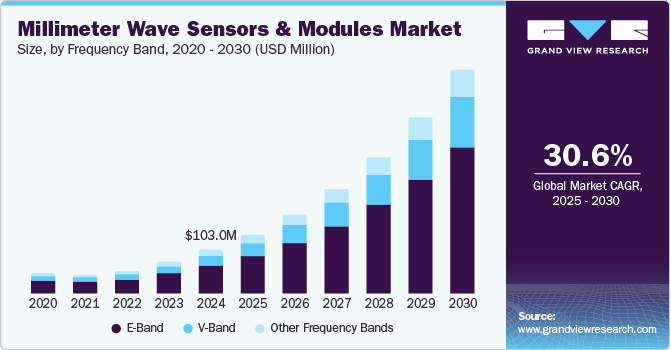Smart Retail Market Size, Share & Trends Analysis growing at a CAGR of 30.3% from 2025 to 2033

The global smart retail market size was estimated at USD 43.13 billion in 2024 and is projected to reach USD 450.69 billion by 2033, growing at a CAGR of 30.3% from 2025 to 2033, due to the increasing adoption of Internet of Things (IoT) and smart devices. Retailers are increasingly leveraging IoT-enabled technologies, such as smart shelves, beacons, and RFID systems, to gain real-time insights into inventory levels, customer footfall, and shopping patterns.
Key Market Trends & Insights
- North America dominated the global smart retail market with the revenue share of 34.1% in 2024.
- The smart retail industry in the U.S. is expected to grow significantly over the forecast period.
- By solution, hardware segment led the market and held the revenue share of 64.5% in 2024.
- By application, visual marketing segment led the market and held the revenue share of 28.2% in 2024.
Market Size & Forecast
- 2024 Market Size: USD 43.13 Billion
- 2033 Projected Market Size: USD 450.69 Billion
- CAGR (2025-2033): 30.3%
- North America: Largest market in 2024
- Asia Pacific: Fastest growing market
Request a free sample copy or view report summary: https://www.grandviewresearch.com/industry-analysis/smart-retail-market/request/rs1
These technologies enhance operational efficiency, reduce shrinkage, and improve the overall customer experience. The growing need for automation and real-time tracking in physical stores has accelerated the deployment of smart infrastructure across retail outlets globally.
The rapid integration of artificial intelligence (AI) and data analytics also contributes to the smart retail industry. Retailers are utilizing AI-driven tools for demand forecasting, customer behavior analysis, personalized marketing, and dynamic pricing strategies. AI-powered chatbots and virtual assistants are also transforming customer service by offering 24/7 support and tailored recommendations. This personalization helps increase customer loyalty and average order value, making AI a crucial enabler of smart retail growth. For instance, in March 2025, Advantech Co., Ltd., a Taiwan-based IoT intelligent systems provider enhanced its iVisionSuite with LLM integration, enabling retail mall operators to improve customer engagement and streamline operations. Combined with VisionSense’s AI features, such as object detection and facial analysis, and Advantech’s edge hardware, the solution boosts efficiency and enhances the shopping experience.
The rising popularity of omnichannel retailing is also contributing to the expansion of the smart retail market. Consumers increasingly expect a seamless experience across online and offline channels. To meet this demand, retailers are deploying smart solutions that unify in-store, mobile, and web-based experiences. Technologies such as smart checkout systems, mobile payments, and digital signage support an integrated retail approach, improving customer satisfaction and retention. Moreover, the shift in consumer preferences toward contactless shopping, especially after the COVID-19 pandemic, has accelerated the adoption of smart retail technologies. Self-checkout kiosks, cashier-less stores, QR code scanning, and mobile wallet integration have gained traction as consumers prioritize convenience, safety, and speed. These changes in shopping behavior are pushing retailers to invest in touchless, tech-driven solutions to remain competitive.
Solution Insights
The hardware segment dominated the market and accounted for the revenue share of 64.5% in 2024, driven by the advancements in edge computing and sensor technologies, which enable faster data processing directly at the source, reducing latency and reliance on cloud infrastructure. The proliferation of smart point-of-sale (POS) systems, interactive kiosks, electronic shelf labels (ESLs), and surveillance cameras is also fueling demand, as retailers seek to modernize store infrastructure for real-time decision-making and security. In addition, the integration of 5G connectivity is enhancing the capabilities of retail hardware by supporting high-speed, low-latency communication between devices, paving the way for more responsive and immersive in-store experiences such as augmented reality (AR) mirrors and smart fitting rooms.
The software segment is anticipated to grow at the highest CAGR during the forecast period due to the growing need for centralized platforms that can manage diverse in-store technologies and unify customer, inventory, and sales data across channels. Retailers are increasingly investing in software solutions for real-time analytics dashboards, inventory optimization, workforce management, and supply chain visibility to streamline operations and reduce costs. Moreover, the demand for cloud-based retail management software is rising due to its scalability, ease of updates, and remote access capabilities, especially for retailers with multi-location operations.






